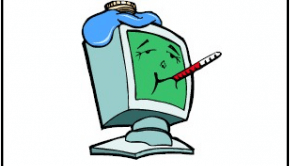What is Timer.exe, and how to Fix it
Reader Question:
“Hi Wally, A Suspicious process called Timer.exe has appeared in my computer’s Task Manager. What is it? Is it harmful?” - Phillip B., Canada
Before addressing any computer issue, I always recommend scanning and repairing any underlying problems affecting your PC health and performance:
- Step 1 : Download PC Repair & Optimizer Tool (WinThruster for Win 10, 8, 7, Vista, XP and 2000 – Microsoft Gold Certified).
- Step 2 : Click “Start Scan” to find Windows registry issues that could be causing PC problems.
- Step 3 : Click “Repair All” to fix all issues.
Setting up weekly (or daily) automatic scans will help prevent system problems and keep your PC running fast and trouble-free.
Wally’s Answer: It is always good to be mindful of the processes running on your computer. Especially of these processes are using excessive amounts of system resources. So, is Timer.exe malware, virus, spyware, trojan, or adware that has invaded your computer, or is it a harmless little program that you can trust.
What is Timer.exe
The process Timer.exe is a part of the Incognito GmbH software or Dream Render. It is loaded from ”C:\Program Files”. It is roughly 20 kilobytes. It may try to modify the behavior of other programs. It does not open in its own window, and it is not a Microsoft Windows process. This program is suspicious and generally regarded as a threat.
It may also appear in the “Documents and Settings” folder. In that case, it may be a file of size 72.5 kilobytes. It may be in a compressed file. It should be removed from the computer.
Timer.exe may be malware if it is located in the c:\windows or c:\windows\system32 folder.
How to remove Timer.exe
The Timer.exe program can be removed from the computer from the control panel by removing the Dream Render program. If this does not succeed in the removal of Timer.exe from your computer then it is best to use suitable anti-malware software.
Deceptive Malware
Malware programs can be deceptively named anything. This means that if you see this process running on your computer then it might actually be a threat. Check where the file is located on your computer.
If a non-Microsoft .exe file is stored in the C:\Windows or C:\Windows\System32 folder, then it might be a spyware, virus, trojan, worm or some other infection. Some Anti-spyware software includes Spybot – Search & Destroy, and WinThruster.
I Hope You Liked This Blog Article! If You Need Additional Support on This Issue Then Please Don’t Hesitate To Contact Me On Facebook.
Is Your PC Healthy?
I always recommend to my readers to regularly use a trusted registry cleaner and optimizer such as WinThruster or CCleaner. Many problems that you encounter can be attributed to a corrupt and bloated registry.
Happy Computing! ![]()

Wally’s Answer Rating
Summary: Every Windows Wally blog post is evaluated on these three criteria. The average of all three elements determines an "Overall Rating" for each blog post.














